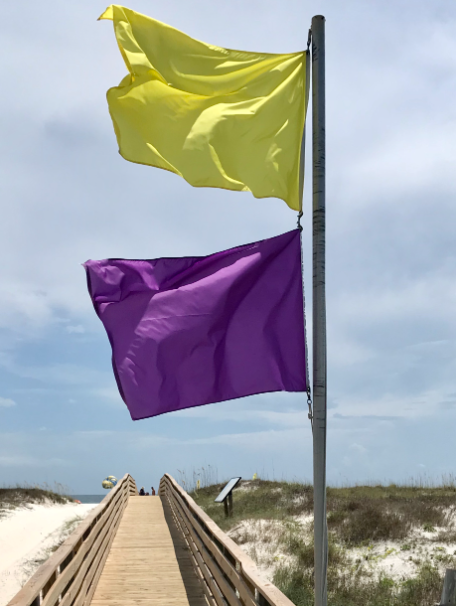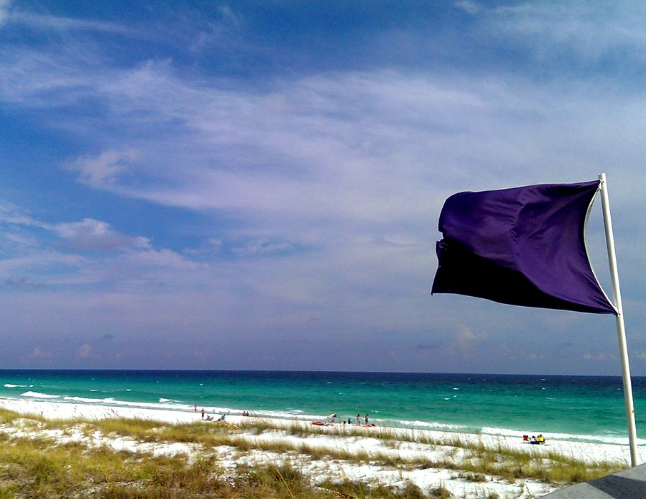There’s nothing quite like a day at the beach—the sun, the sand, and the endless blue ocean. But as much as we love the beach, it’s important to pay attention to the flags that line the shore. Most of us know what the green, yellow, and red flags mean, but the purple flag is a bit of a mystery. What does it signify, and why is it important?
On a typical beach day, you might see a green flag, which means the water is calm and safe for swimming. A yellow flag suggests moderate hazards, while a red flag warns of high danger, like strong currents or rough waves. But the purple flag is different. It’s not about the water conditions; it’s about what’s in the water.

The purple flag is a warning that marine pests, such as jellyfish or stingrays, are present. It’s the ocean’s way of saying, “Be careful—there’s more beneath the surface than you can see.” This flag is especially important for swimmers and waders, as it alerts them to potential dangers that aren’t immediately obvious.

I first noticed the purple flag on a sunny afternoon at the beach. The waves looked perfect, and the water seemed inviting. But as I scanned the flags, I saw the purple one waving gently in the breeze. Intrigued, I decided to learn more. What I discovered was both surprising and enlightening. The purple flag isn’t just a random addition—it’s a crucial safety measure.

So, the next time you’re at the beach and see a purple flag, take it seriously. It’s there to protect you from hidden hazards in the water. Whether it’s jellyfish drifting in the waves or stingrays hiding in the sand, the purple flag is a reminder to stay vigilant and enjoy the ocean responsibly.


